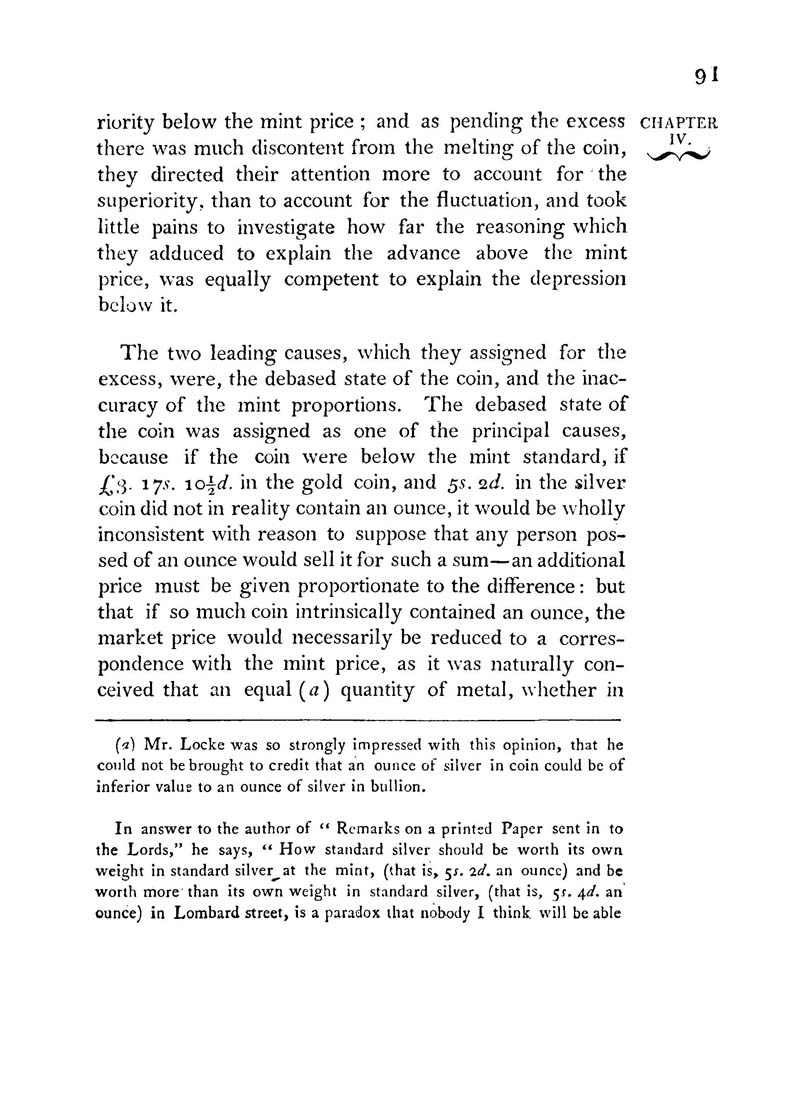91
riority below the mint price ; and as pending the excess chapter
there was much discontent from the melting of the coin,
they directed their attention more to account for the
superiority, than to account for the fluctuation, and took
little pains to investigate how far the reasoning which
they adduced to explain the advance above the mint
price, was equally competent to explain the depression
below it.
The two leading causes, which they assigned for the
excess, were, the debased state of the coin, and the inac¬
curacy of the mint proportions. The debased state of
the coin was assigned as one of the principal causes,
because if the coin were below the mint standard, if
£S- ly.s'. ^o\d. in the gold coin, and 55. o.d. in the silver
coin did not in reality contain an ounce, it would be wholly
inconsistent with reason to suppose that any person pos-
sed of an ounce would sell it for such a sum—an additional
price must be given proportionate to the difference: but
that if so much coin intrinsically contained an ounce, the
market price would necessarily be reduced to a corres¬
pondence with the mint price, as it was naturally con¬
ceived that an equal (a) quantity of metal, whether in
{a) Mr. Locke was so strongly impressed with this opinion, that he
conld not be brought to credit that an ounce of silver in coin could be of
inferior value to an ounce of silver in bullion.
In answer to the author of *' Remarks on a printed Paper sent in to
the Lords," he says, " How standard silver should be worth its own
weight in standard silver at the mint, (that is> 5J. 2d. an ounce) and be
worth more than its own weight in standard silver, (that is, 5i-. 4^. an
ounce) in Lombard street, is a paradox that nobody I think, will be able
|








